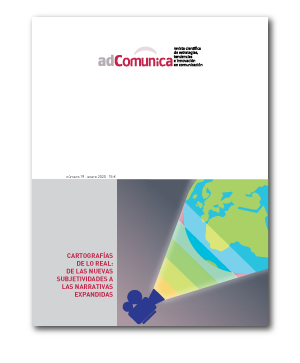Las narrativas expandidas a través del <i>product placement</i> inverso: el caso de las zapatillas NikeMAG
##plugins.themes.bootstrap3.article.main##
Resum
El sector de la publicidad cuenta con una constante evolución de sus métodos en busca de una relación más directa entre la marca y el público objetivo. Una de las herramientas comunicativas que ha favorecido esa evolución es el product placement inverso, una forma de emplazamiento de producto que recrea marcas de ficción en el mundo real. Es una herramienta que apenas cuenta con unas décadas de desarrollo. Sin embargo, se trata de una técnica inexplorada en el mundo académico y que necesita de una ordenación teórica. Por esta razón, en esta investigación se busca estudiar esta práctica publicitaria con el objetivo de analizar el tratamiento y posibilidades de comunicación que es capaz de ofrecer. Para ello, se ha tomado como muestra a uno de sus casos históricos más relevantes. En concreto, el caso de las zapatillas NikeMAG de Regreso al Futuro 2 (1989). Para su realización se ha elaborado un análisis cualitativo de la información bibliográfica recabada así como de las declaraciones exclusivas para este artículo de Chris Dukeminier, Global Brand Director de NikeSB. Los resultados obtenidos estructuran los procesos y las relaciones desarrolladas con el público al materializar estas marcas desde sus narrativas originales. Se trata de una investigación que reflexiona sobre la concepción transmedia de este tipo de proyectos tomando como muestra un ejemplo de proyección internacional que ilustra el uso de esta herramienta publicitaria de cara al futuro.
Descàrregues
##plugins.themes.bootstrap3.article.details##
1. Política propuesta para Revistas que ofrecen Acceso Abierto
Los autores que publican en esta revista están de acuerdo con los siguientes términos:
- Los autores conservan los derechos de autor y garantizan a la revista el derecho de ser la primera publicación del trabajo al igual que licenciado bajo la licencia CC BY-SA, que permite a otros compartir el trabajo con un reconocimiento de la autoría del trabajo y la publicación inicial en esta revista.
- Los autores pueden establecer por separado acuerdos adicionales para la distribución no exclusiva de la versión de la obra publicada en la revista (por ejemplo, situarlo en un repositorio institucional o publicarlo en un libro), con un reconocimiento de su publicación inicial en esta revista.


